Keel Deflections
Introduction
IOM keels have become very thin and are amazingly stiff. They do, however, sag and twist under load and this article explores how much. Two fairly recent keels were tested, an Obsession keel and a Cockatoo keel. Both keels were 6% thick, the Obsession was parallel sided with a width of 83.5mm; the Cockatoo keel was tapered from 90mm at the top to 70mm at the bottom. The shapes were subtly different, the Obsession having the maximum thickness slightly further forward than the Cockatoo. The apparatus is shown in the photo, the black Cockatoo keel is clamped at the right hand end, the battens are clamped across the base and the movement measured by the two .01mm dial gauges. The ballast bulbs in the background were used as weights.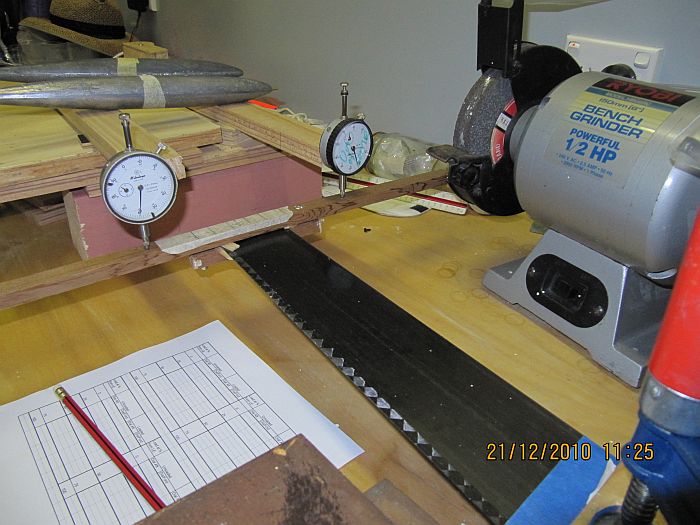
1.0 Keel deflections in bending
Both keels showed similar deflection under load in bending. To make this measurement the top of the keel was clamped rigidly and a weight applied to the bottom of the keel. For a distance from the hull to the C of G of the ballast bulb the Obsession deflected by 5.4mm per kg while the Cockatoo deflected 5.6mm per kg. Given the taper in both width and thickness of the Cockatoo keel this was a surprising result, but some of the thickness of the Obsession keel is taken up with paint while the Cockatoo keel is carbon fibre and resin for its full thickness.
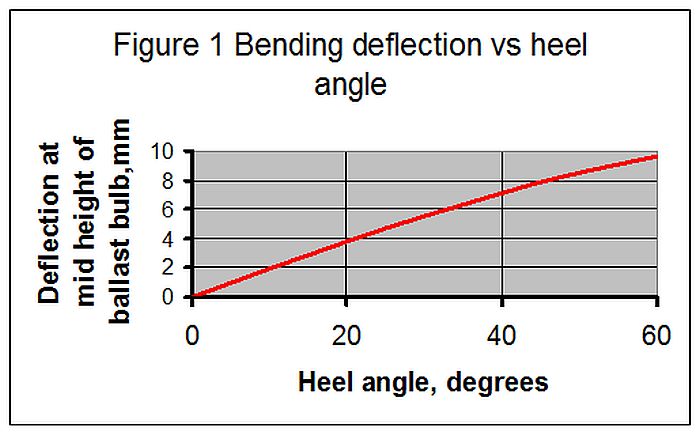 Once the boat heels the ballast weight exerts a sideways force on the keel causing the keel to droop. This is reduces to some degree by the water force acting on the keel in the opposite direction and also to a lesser degree by the force exerted along the keel by the ballast weight. The effective weight of the ballast is, of course, decreased by the buoyancy force which reduced it’s weight by about 9%. It is possible to calculate how much the keel would droop for different angles of heel for a keel of the same general stiffness as those tested and the result is given in Figure 1for an A rig, those for B and C rigs will be very slightly smaller. The deflections are not serious (obviously because boats win championships with these keels!) but are non trivial.
Once the boat heels the ballast weight exerts a sideways force on the keel causing the keel to droop. This is reduces to some degree by the water force acting on the keel in the opposite direction and also to a lesser degree by the force exerted along the keel by the ballast weight. The effective weight of the ballast is, of course, decreased by the buoyancy force which reduced it’s weight by about 9%. It is possible to calculate how much the keel would droop for different angles of heel for a keel of the same general stiffness as those tested and the result is given in Figure 1for an A rig, those for B and C rigs will be very slightly smaller. The deflections are not serious (obviously because boats win championships with these keels!) but are non trivial.
2.0 Keel Deflections in Torsion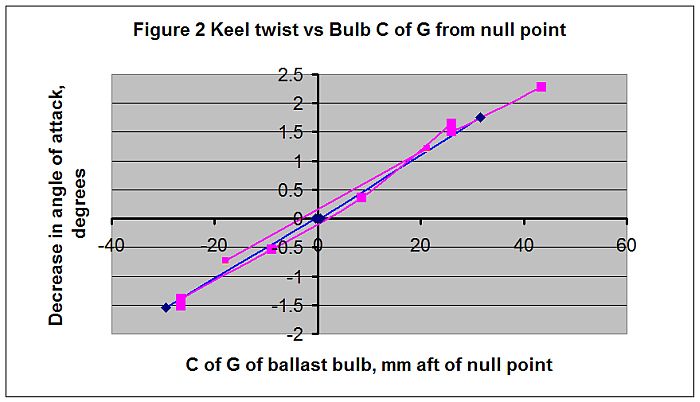
This was examined by clamping the top of the keel and fastening a strip of wood securely to the bottom of the keel. The twist at the bottom of the keel was then measured by dial gauges and, in some cases, by calipers as a ballast weight was placed at different positions on the chord of the keel. One arrangement is shown in the photo above. There is one position for the C of G of the ballast bulb on the keel bottom (the “null point”) where the keel does not twist but simply sags down. This was 31.5mm from the LE of the Obsession keel and 29mm for the Cockatoo one. The null point moves a few mm depending on the angle the hull makes with the leading edge of the keel.
Figure 2 shows the twist in the keels as a function of the distance of the C of G of the ballast bulb from the null point. The results for the two keels are essentially the same within experimental error.
The forces causing twist are similar to those causing droop and the actual twist can be calculated as a function of heel angle and of the distance of the C of G of the ballast bulb from the null point. 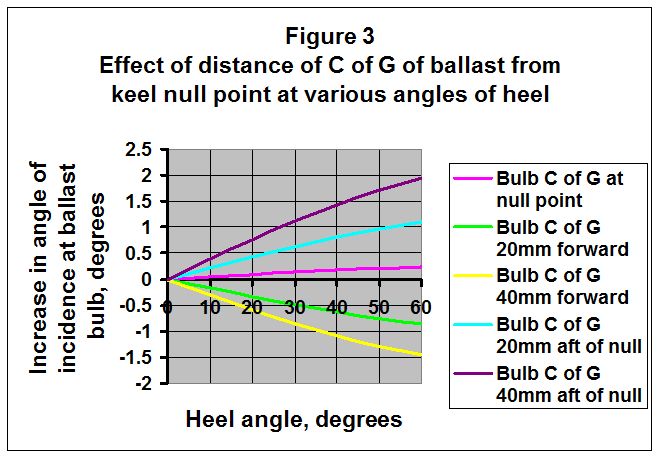
Figure 3 shows the calculated twist at the keel base for a heel angle of 30 degrees. It is not uncommon to have the C of G of the ballast bulb 20mm aft of the null point and it can be seen that at 30 degrees of heel this could cause the angle of attack of the keel to increase by about 0.6 degrees at the bulb tapering to nothing at the hull. This is significant because the leeway angle is only about 2 degrees in most boats.
Also clearly if a prothagonous bulb is used (one protruding a long way in front of the keel), the keel had better be very stiff!
3.0 Dynamics
Experiments in air showed that the natural period of “flapping” of the keels in bending was about 0.3 seconds. In torsion the period was much less: just under 0.1 seconds. To get resonance the period of excitation from waves would need to be similar to these, but measurements show that wave periods in most venues are above 1 second. It seems therefore, and this is borne out be results, that dynamic vibration of the keels is not an issue.
Col Thorne July 2011 and Feb 2013
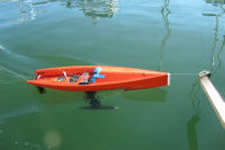
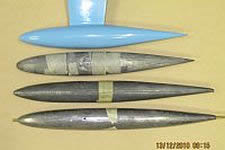
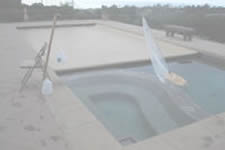
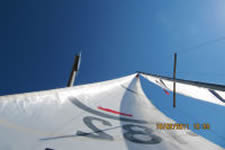
 Keels Etc
Keels Etc